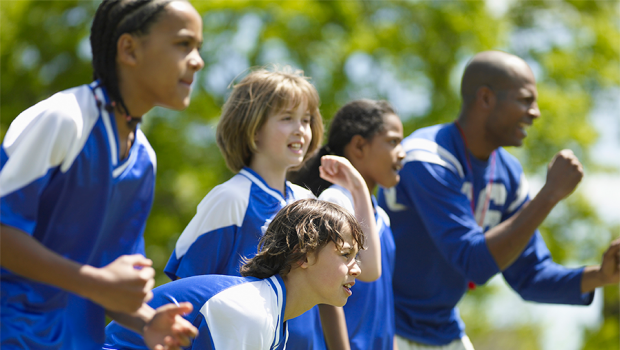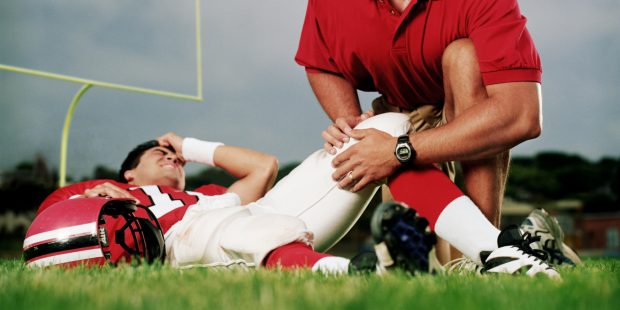
Most of the sports injuries are of the traumatic type such as a bruise, muscle strain, ligament sprain, fractures, etc. Others include muscle soreness, muscle cramps, stiffness, cuts and abrasions. The effect of these injuries is two-fold. One the cells that made up soft tissues

gets damaged and the second is fatigue and weakness. Sometimes fear can also lead to injuries. The body response to traumatic injuries is inflammation.
Common sports injuries are
Ankle sprain
What it is: Most athletes have experienced a sprained ankle, which typically occurs when the foot turns inward. This turning stretches or tears the ligaments on the outside of the ankle, which are relatively weak.
What you can do: With an ankle sprain, it’s important to exercise to prevent loss of flexibility and strength — and re-injury. You can ask your doctor or physical therapist to help you know what kinds of exercise you should do.
Groin pull
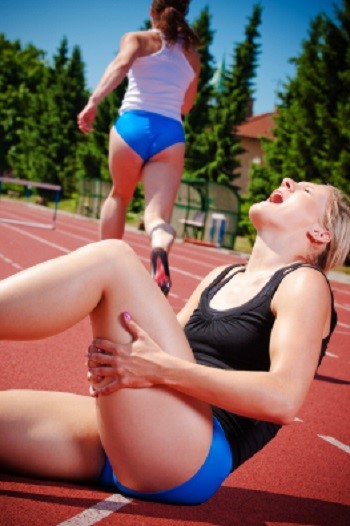
What it is: Pushing off in a side-to-side motion causes strain of the inner thigh muscles, or groin. “Hockey, soccer, football, and baseball are common sports with groin injuries.
What you can do: Compression, ice, and rest will heal most groin injuries. Returning to full activity too quickly can aggravate a groin pull or turn it into a long-term problem.
Hamstring strain
What it is: Three muscles in the back of the thigh form the hamstring. The hamstring can be over-stretched by movements such as hurdling — kicking the leg out sharply when running. Falling forward while waterskiing is another common cause of hamstring strains.
What you can do: “Hamstring injuries are slow to heal because of the constant stress applied to the injured tissue from walking, Complete healing can take six to 12 months. Re-injuries are common because it’s hard for many guys to stay inactive for that long
Shin splints
What they are: Pains down the front of the lower legs are commonly called “shin splints.” They are most often brought on by running — especially when starting a more strenuous training program like long runs on paved roads.
What you can do: Rest, ice, and over-the-counter pain medicine are the mainstays of treatment.
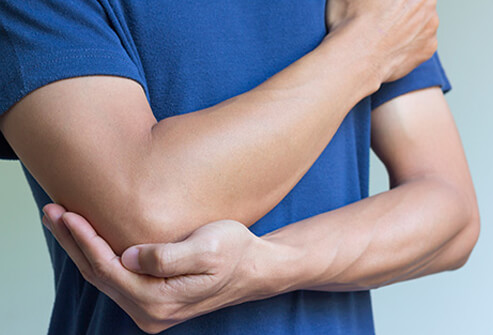
Knee injury: ACL tear
What it is: The anterior cruciate ligament (ACL) holds the leg bone to the knee. Sudden “cuts” or stops or getting hit from the side can strain or tear the ACL. A complete tear can make the dreaded “pop” sound.
A completely torn ACL will usually require surgery in individuals who wish to remain physically active,
Knee injury: Patellofemoral syndrome
What it is: Patellofemoral syndrome can result from the repetitive movement of your kneecap (patella) against your thigh bone (femur), which can damage the tissue under the kneecap. Running, volleyball, and basketball commonly set it off. One knee or both can be affected.
What you can do: Patience is key. Patellofemoral pain can take up to six weeks to clear up. It’s important to continue low-impact exercise during this time. Working out the quadriceps can also relieve pain.
Tennis elbow (epicondylitis)
What it is: Repetitive use of the elbow — for example, during golf or tennis swings — can irritate or make tiny tears in the elbow’s tendons. Epicondylitis is most common in 30- to 60-year-olds and usually involves the outside of the elbow.
What you can do: Epicondylitis can usually be cleared up by staying off the tennis court or golf course until the pain improves.
The PRICE principle for treating common sports injuries
First, it’s important to know that swelling is a normal response to these injuries. Excessive swelling, though, can reduce range of motion and interfere with healing. You can limit swelling and start healing faster after common sports injuries by using the PRICE principle:
P — protect from further injury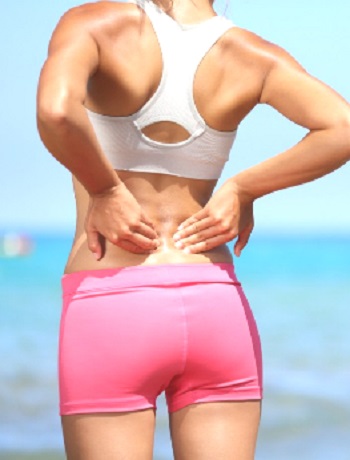

For more severe injuries, protect the injured area with a splint, pad, or crutch.
R — restrict activity
Restricting activity will prevent worsening of the injury
.I — apply ice
Apply ice immediately after a common sports injury. “Ice is the miracle drug” for sports injuries, “It’s an anti-inflammatory, without many side effects.” Use ice for 20 minutes every one to two hours for the first 48 hours after the injury. Don’t use heat during this time — it encourages swelling and inflammation.
C — apply compression
Compression with an elastic bandage will help reduce swelling.
E — elevate the injured area
Elevating the injured area above the heart will also reduce swelling.
When to get medical attention for common sports injuries
One should not only be tough — but also need to be smart. If you suspect a serious injury or if you have any of these signs, see a doctor:
Deformities in the joint or bone — it looks “crooked,” or moves abnormally You cannot bear weight or can’t use the limb without it “giving way”Excessive swellingChanges in skin color beyond mild bruisingIt’s not getting any better after a few days of PRICE therapy
A Disturbing Trend in Sports Medicine
Many athletes choose to use a group of medicines called NSAIDs, or Non Steroidal Anti-inflammatory medicines, to enhance performance, pre-medicate to avoid pain and to treat existing injuries. This group of medications includes Ibuprofen (Motrin, Aleve), Acetaminophen (Tylenol) and Salicylic Acid (Aspirin). They are far from benign.
On the surface these medicines appear harmless, since they help fight inflammation and numb the pain, but they:
Are the leading cause of Kidney Failure
Cause GI bleeding in ALL users.
Cause gastritis, and Peptic Ulcer Disease (PUD) in many long term users.
Suppress the immune system.
Slow down the healing process.
Promote chronic injury.
Dull the perception of important pain signals.
Increase the risk of new injuries.
Increase the risk of worsening existing injuries.
Directly oppose the maxim: “Listen to your body.”
Athletes using NSAIDs before, during and after exercise increase their risk of all these complications. Even in the absence of vigorous physical exercise, these agents are known to damage the body, but during vigorous exercise, the body is at even greater risk of injury from these agents.
During exercise the body typically experiences mild to moderate dehydration and hemo-concentration. This volume reduction increases the concentration of all medicines in the body. As a result, the kidneys, stomach, liver, intestines and muscles all experience higher than normal concentrations of these drugs. As concentration increases, so does the risk of injury. The toxic effects of these substances are magnified during exercise, resulting in an increased risk of developing one or more side effects.
The Benefits Of Using Homeopathy For Sport Injuries
1.You will heal naturally with homeopathy.
It is proven to be clinically safe and effective. All homeopathic remedies are made from natural substances and proven on health people for the hundreds and thousands of healing benefits. All remedies are produced under strict pharmacopia guidelines. Remedies are easily available at your local health food store in the lower potencies. homeopathic remedies can also be ordered on-line for various sports injuries.
2 .You will achieve a rapid and effective healing!
Homeopathy is clinically proven to produce fast healing results! It is a form of medicine that promotes natural healing because it is not suppressive. Homeopathy does not stop your body from doing anything – or suppress symptoms. Instead is SPEEDS UP the natural healing process. People using homoeopathy have shorter down times as athletes and a faster healing cycles. This mean they can back on the basketball court, the track, the football field, the weight room, the soccer field, the ice rink, the dance floor or the pool – or wherever they need to be, enjoying their sport!
3.you will Prevent Unnecessary Surgeries
Sadly, when some sport injuries are not properly and effectively treated, the person may need surgery. Suppressing pain with pain killers on injured or torn muscles or pulled ligaments or tendons does not help them HEAL – it only suppresses pain. Even if surgery becomes necessary for any sports injury, by using homeopathic remedies, broken bones will heal faster with homeopathy! Muscle tears will mend more quickly. Head injuries and head concussions will heal and long term damage is avoided.Homeopathy not only heals sport injuries quickly, but it also can be used as a preventative medicine.
4.Maintain Your Peak Athletic Performance.
With homeopathy and proper nutritional supplementation, athletes will help maintain sports performance both physically and mentally. If you are in pain, or with worry or anxiety over an injury, an upcoming competition, the loss of playing time – these all can be very discouraging, especially to a competitive athlete.
5.No Risk of Doping: Doping is use of illegal drugs to increase performance in field. Since homeopathic medicine are colloidal solutions and contains nanoparticles, they do not show up in any drug testing procedures (blood tests).
COMMONLY USED HOMEOPATHIC MEDICINES
The most commonly used homeopathic medicines are Arnica Montana, Arsenicum Album, Ruta Graveolens, Rhus Toxicodendrom, Hypericum, Ledum Pal, Calendula, Symphytum, Bellis Perennis, Bryonia and Strontium Carbonicum. Among them, Arnica and Rhus tox are most widely used
Sports medicine specialist *Steven Subotnick* has written two books in association with Runner’s World. He now writes “I give homoeopathic medicines to virtually every patient I see. They work incredibly well, and I just wish I knew about them a long time ago.”
Homoeopathic medicines are not only useful in helping to heal injuries more rapidly, but they can also improve a person’s overall health. This strengthening of the body reduces the chances of injury, and, equally important, it improves overall functioning by speeding the healing processes when sports people are ill.


